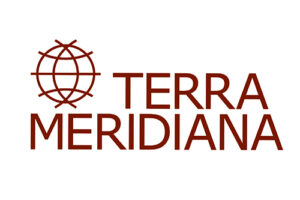What’s so special about Jamón Ibérico de Bellota – how can a slice of cured ham be so important to a country and to world cuisine?
We take a look at the traditions, culture and specifics behind the celebrated and noble Spanish delicacy of Jamón Ibérico de Bellota and why it is such a culinary masterpiece.
Article by Victoria Wood

The black Iberian pig is no ordinary pig. It is steeped in tradition with breeding, location and diet being at the forefront of its legendary product. Jamón ibérico de Bellota is no ordinary meat; the depth of its rich, magenta hue, the sheen on the almost translucent fatty streaks, and the petal-thin slithers it is served in are just the first steps of the sensory magic that it conjures. When you taste it you will know what I am talking about. The oaky, creamy nuttiness, the salty yet mildly sweetness, and that rare power-punch of flavour that almost stings the tongue as it practically dissolves, are incomparable to other cured hams.
So what makes this ham so delicate, refined and ultimately special?
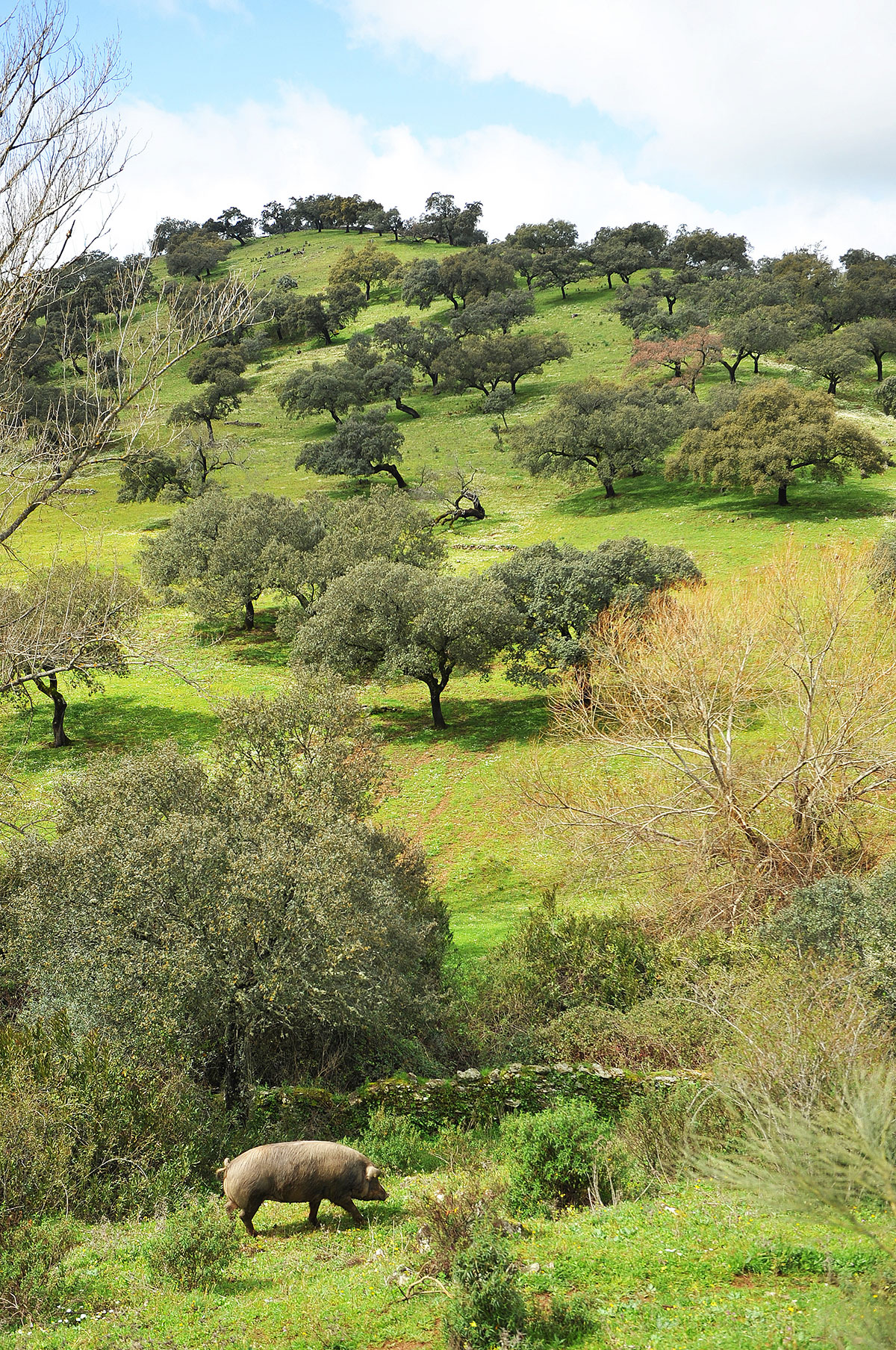
Location
Jamón Ibérico de Bellota is undeniably location orientated. It does not come from anywhere else, this is its stamp of authenticity. Having once been covered in oak, the Spanish countryside now is limited to only four regions where the pigs still officially roam; Guijuelo, Huelva, Les Pedroches, and Extremadura. This is a fiercely region-specific product just like Champagne, for example. If it’s not from one of these particular oak-filled pastures (dehesa) in western Spain, from a purely acorn (bellota) fed black iberian pig, it’s not the right ham.
The pig’s environment and all the elements of its rearing are strong factors in the quality of the jamón; the location, the breeding, the weather, the seasons, the farming ethics, the specific trees, how much they eat, how far they walk, population, etc. everything is interdependent and contributes to the end product.
How the pata negra, or black-footed pigs developed was an accident of nature; how in summer their need for water meant they took regular exercise to locate it, thus developing a strong thigh which serves to support their montanera season between October and February when they gain some serious weight gorging on delicious native acorns. The terrain covered in their lifetime is undulating and the constant exercise encourages the oils from their diet to infuse naturally into the body, all adding to that distinct, one-of-a-kind flavour.
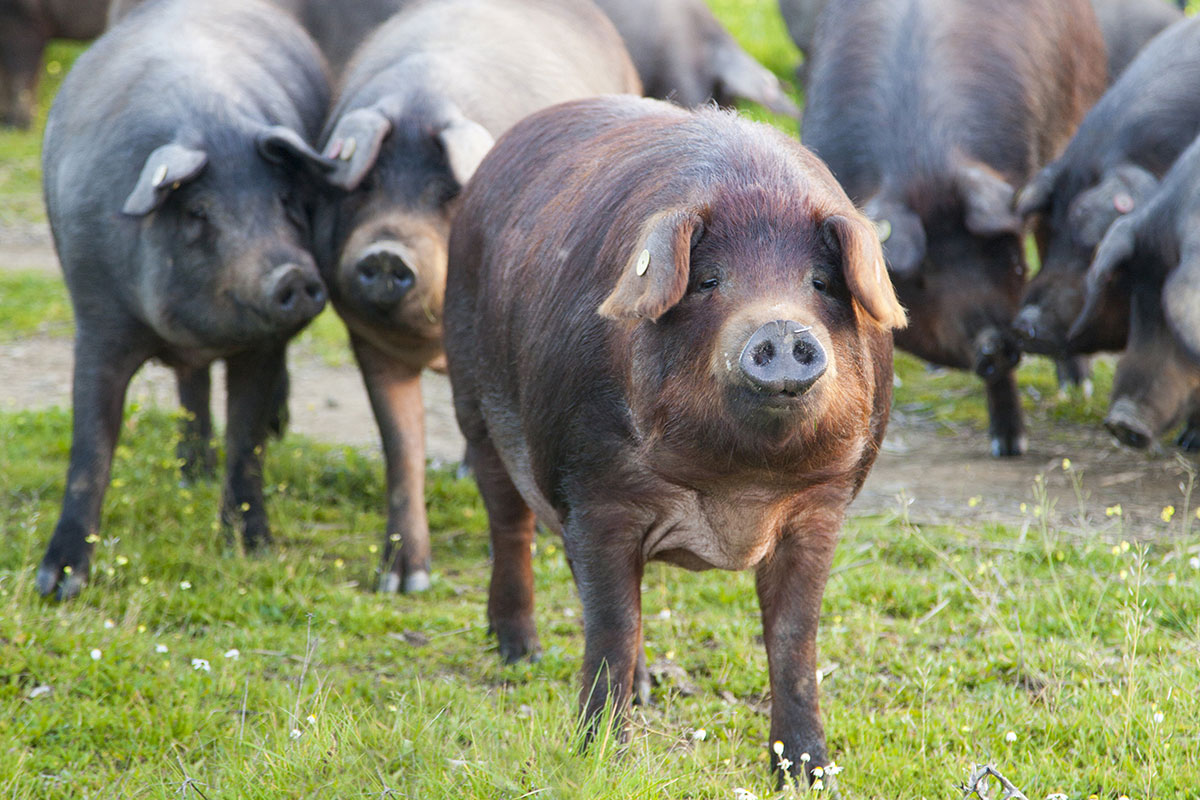
Breed
This is a specific pig, indigenous to the Iberian countryside. They have minimal amounts of black hair, black hooves (pata negra), and are larger than the domestic pink pigs we have come to know, as well as being notoriously fat and muscly. This fat, as well as their naturally occurring antioxidants due to their active lifestyle, is what layers the ham itself allowing for a longer curing period and permitting a more intensely developed flavour. It is important to note that there is also jamón iberico available that is NOT from the same pig as we are discussing – these such pigs are fed with corn as well as acorns and other foodstuffs, and do not receive the same levels of freedom and almost wild lifestyle. For the ultimate ham, the acorns are the key; purely bellota-fed pigs are the only ones who produce the delicacy we are discussing. And therefore the name must read Jamón Ibérico de Bellota, not just Jamón Ibérico.
Curing
The slaughter of these pigs is quick and pain-free.From there the fatty legs are traditionally packed in sea salt (often for a day per kilo of weight) as the rest of the pig is transformed into other cuts of pork products. The salted legs are left for a few weeks and then hung in local factories where the mountain air can still penetrate and circulate.
Iberian hams are cured for varying lengths of time which will reflect in the quality and price of the end product. The bellota varieties are cured for more lengthy periods due to the extra layers of fat and antioxidants provided by their lifestyle. The weight of the legs will reduce over time due to the reduction of the fat and as the days heat up the ham will begin to sweat. There is not a risk of bacteria due to the salt and as the winter cools the meat it starts to dry out. This seasonal cycle can be repeated up to four times (years) or more for a bellota ham thus building a complex chemical formula that results in the incredible transformation and development of flavours. The saturated fats are broken down gradually throughout the heating, cooling, salting and drying and, due to the antioxidants mentioned before, transform into healthier mono-unsaturated fats which are high in oleic acid – also present in olive oil.
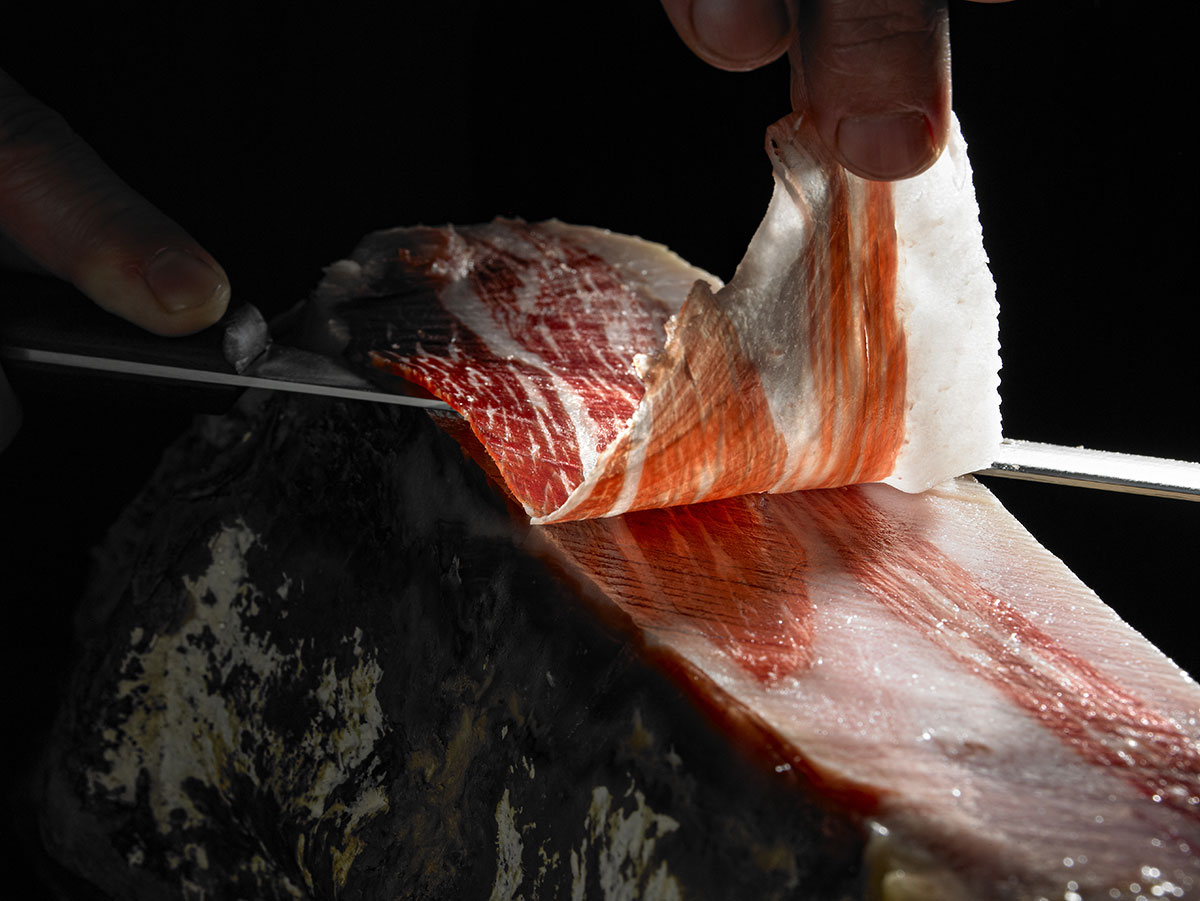
Jamón
A long, slender leg of ham with an amber coloured coating is the result with a marbled, deep red to almost burgundy meat. Paper-thinly sliced to an artistic level – this is a very specific procedure – never served chilled, but almost warm enough for the fat to start to relax into the platter and then melt on your tongue.
You can almost taste the country air, the acorns and the sweet, nutty saltiness developed over years of care and attention. This ham is a specific variety marked as “black label” and “100% ibérico de bellota”. To achieve this status the pig must be pure-bred, have roamed free-range on the dehesa (with no more than two pigs per hectare) and been fed only on acorns during the montanera season as specified previously.
There are also red, green and white label jamón iberico which decreases in quality respectively due to being cured for less time and the pigs being fed on lesser quality grains, not leading the lifestyle of the black label pigs, and possibly not being a purebred animal.
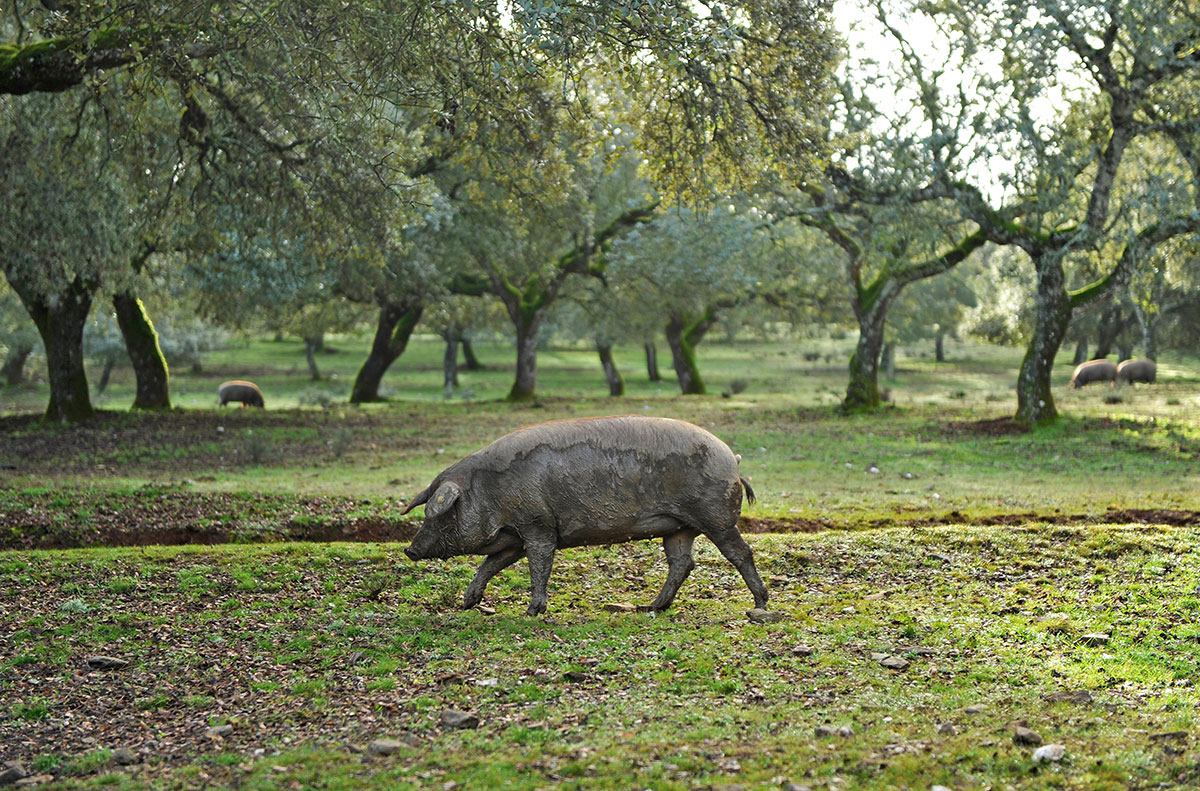
The Jamón Ibérico de Bellota is an indigenous product steeped in tradition and is one of the more romantic farming methods known to Europe. There are many variables involved and practices which are long forgotten in most mass-produced foods. The Spain we know today has had a vast boom in construction and many of the natural landscapes and habitats of the Iberian pigs have been destroyed. The recent food trends for world-class produce has put pata negra back on that map as a global delicacy and one whose traditions and culture are an integral part of the flavour. Thanks to this tradition, many parts of the oak-filled dehesas are now being preserved for the beloved pigs and the most incredible ham in the world may continue to live on.




















